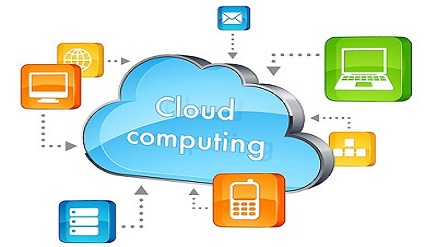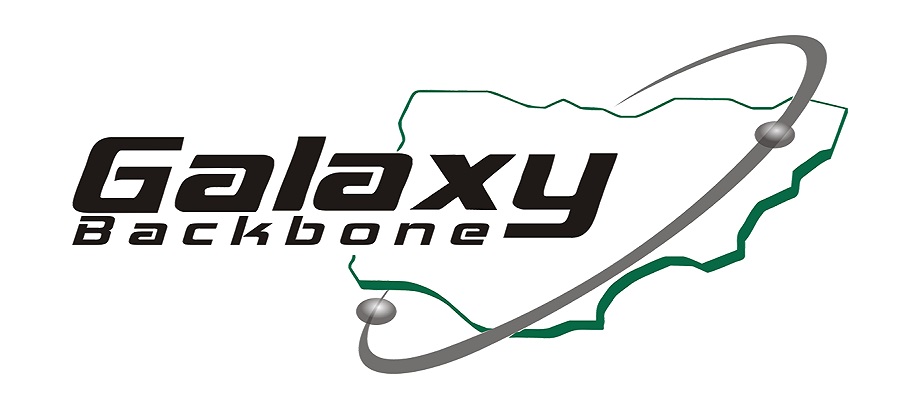E-Business
VMware Discusses Five Reasons to Consider Cloud-based Disaster Recovery

There is no question that every business wants to protect their operations from downtime and loss of data. But many companies don’t have the internal expertise or budget to implement the disaster recovery plan they need, according to information share by VMware.
The company affirmed that traditional disaster recovery solutions typically cost too much; they’re too complex; and they are not always reliable.
VMware vCloud® Hybrid Service™ – Disaster Recovery introduces native cloud-based disaster recovery capabilities for VMware vSphere® virtual environments.
Built on VMware’s hypervisor-based replication engine, vSphere Replication, and integration support with vCloud Hybrid Service, it provides simple and secure asynchronous replication and failover.
Consider these top five reasons why you should look to the cloud for your disaster recovery needs.
Ease of Getting Started Deploying and managing a traditional disaster recovery plan can be complex and require time, budget, and staff that you may not have.
vCloud Hybrid Service – Disaster Recovery provides an easy way to get started with an effective disaster recovery plan—without investing in any hardware, without hiring and training new specialists, and without having to invest in a secondary site.
The service provides a simple, secure, automated process for replicating and recovering applications and data in the case of a local disaster or disruptive event.
Flexible, Lower Cost Alternative The costs of traditional disaster recovery solutions can force you to make tradeoffs on what you can afford to protect versus what you need to protect. This can leave your organization vulnerable to having inadequate protection.
Disaster Recovery addresses variable capacity requirements needed to support common DR use cases, such as replication, failover, and recovery, at a significantly reduced price point over traditional in-house disaster recovery solutions or managed service alternatives.
You have the scalability to accommodate shifting requirements, you pay only for what you need, and you have flexible subscription options.
Simplified Environment Creating a comprehensive disaster recovery plan can be complex, whether you are trying to do it yourself or are choosing a managed service provider.
vCloud Hybrid Service – Disaster Recovery is built on vSphere Replication and integrated with vCloud Hybrid Service, enabling you to consolidate your IT needs across your data center, hybrid cloud, and disaster recovery plans.
This means you can leverage the same tools, skill sets, and processes that you already use. And you’ll have the confidence that you will get the same reliability, security, and support you know and trust from VMware.
Management Consistency The ongoing maintenance and monitoring of a disaster recovery solution can require new training and skills, and introduce time-consuming manual processes. Disaster Recovery provides a single interface and common management with your onsite VMware environment.
You’ll get up and running faster as your admins can use the UI that they are most familiar and comfortable with to manage your disaster recovery environment. Workflow execution and task management are available from both vSphere Replication and the
vCloud Hybrid Service Console to ensure access to your disaster recovery environment at all times. use cases Avoid Building Secondary Disaster Recovery Site Cloud-based disaster recovery allows you to protect your production environment without the expense and management burden of replicating it to a secondary site operated by core IT staff. It’s a great way to improve upon existing disaster recovery plans—or get a new plan off the drawing board and into operation— with minimal cost and resources.
Replace or Enhance Traditional Disaster Recovery Solution With cloud-based disaster recovery you can replace or enhance a traditional in-house or secondary site disaster recovery solution with newer functionality without capital investment, with elastic scaling and flexible subscription terms.
Deliver Disaster Recovery Solution for Remote Offices Cloud-based disaster recovery makes it possible to protect remote office sites without additional CapEx investments and with lower OpEx. You can extend your current disaster recovery plan to include satellite offices with no additional recruiting, hiring, and training expenses.
Self-Service Protection With disaster recovery solutions, the caliber of the support available and the ability to test recovery procedures often can make a difference in the degree of confidence you have in recovering your systems.
Disaster Recovery enables self-service protection, and comprehensive failover and failback workflows for each virtual machine. You have control over what to protect and when. You can set custom Recovery Point Objectives (RPO) per virtual machine for fine-grained control over replication frequency based on business application priorities.
You also have best-in-class customer service and testing support with a single vendor to call—VMware. Summary With a cloud-based disaster recovery solution, you benefit from lower price points, flexible contract terms, and the scalability to grow as your needs change.
vCloud Hybrid Service – Disaster Recovery allows you to increase business resiliency while protecting applications, with minimal investment.
E-Business
Jumia CEO says Black Friday Signals Nigeria’s E-Commerce Maturity

At the close of 2025, Temidayo Ojo, the CEO of Jumia Nigeria, reflected on a year-end shopping season that points to the growing maturity of the country’s e-commerce market. “Black Friday is no longer a single, short-lived spike in activity,” he said.

“It has become a familiar, anticipated moment in the retail calendar, where consumers shop deliberately and with confidence.”
Preliminary KPIs for the two months ended November 30, 2025, show strong year-on-year growth in both orders and Gross Merchandise Value (GMV), with GMV growth outpacing order growth. This indicates that customers are placing fuller, more considered baskets rather than shopping in fragmented transactions. Nigeria ranked among Jumia Group’s better-performing markets, with engagement remaining steady throughout the Black Friday period rather than spiking briefly and tapering off.
A key factor behind this performance is the growing familiarity of consumers with online shopping. Customers are increasingly leveraging platform features such as saved carts, brand stores, and price comparison tools to plan purchases in advance. This trend suggests that digital commerce is becoming embedded in everyday habits rather than being viewed as a one-off event.
Ojo also highlighted the role of Jumia’s JForce network in connecting digital commerce to local communities. “Our agents are critical to ensuring that customers across Nigeria, including secondary cities and smaller communities, have access to variety, consistent pricing, and reliable delivery,” he said. “During peak periods like Black Friday, JForce agents can respond faster, serve more customers efficiently, and build stronger local relationships. This isn’t just a distribution channel—it’s a pathway to sustainable income and inclusion.”
Reflecting on the overall performance, the CEO concluded: “What we’re seeing this year-end is steady engagement across categories, stronger consumer confidence, and partners like our JForce agents benefiting from increased activity.
“It confirms that Nigeria’s e-commerce ecosystem is maturing, growing in a more structured and resilient way. As the December Holiday Sale continues, we expect these patterns of familiarity, trust, and participation to sustain momentum and drive both commerce and community impact across the country.”
E-Business
Galaxy Backbone Tops FG’s Website Performance Ranking

Galaxy Backbone Limited (GBB) has been ranked first overall in the 2025 Federal Government Website Performance Scorecard.

This is a landmark achievement for Nigeria’s digital economy.
The ranking, conducted by the Bureau of Public Service Reforms (BPSR), is the definitive benchmark for digital excellence and transparency across all Ministries, Departments, and Agencies (MDAs).
Professor Ibrahim Adepoju Adeyanju, managing director and CEO of Galaxy Backbone, received the award during a ceremony in Abuja.
He described the feat as a validation of the agency’s“Nigeria First”data sovereignty strategy and its relentless pursuit of service excellence.
This recognition comes as the Federal Government intensifies its push to achieve a fully paperless civil service by December 31, 2025.
GBB has been the primary architect of this transition through its 1Gov Enterprise Content Management (ECM) platform, which now hosts the operations of almost all federal MDAs.
The award adds to a growing list of accolades for Galaxy Backbone in 2025, following its recent win of the “International Standard Excellence Award for Best IT Service Provider.”
As the central hub for government shared services, GBB’s performance serves as a blueprint for other agencies currently undergoing digital transformation.
With its expanded fiber-optic backbone now covering over 13 states and its secure cloud solutions, Galaxy Backbone remains the cornerstone of Nigeria’s vision to become a leading digital nation by the end of the decade.
E-Business
Nigeria Police Arrest Okitipi, Nigerian Allegedly Linked to Microsoft 365 Hack

Okitipi Samuel, a Nigerian man, has been taken into custody by the Nigeria Police Force for his alleged role in a global cyberattack on Microsoft 365 users.

Benjamin Hundeyin, Force public relations officer, disclosed this on Thursday in Abuja while briefing journalists on the outcome of investigations carried out by the National Cybercrime Centre of the Nigeria Police Force.
Hundeyin said the centre, under the leadership of Ifeanyi Uche, its director and Commissioner of Police, commenced investigations in collaboration with Microsoft, the Federal Bureau of Investigation, the United States Secret Service, and the United Kingdom’s National Crime Agency.
According to him, investigations revealed that a phishing toolkit known as “Raccoon 0365” was used to create fake Microsoft login portals to harvest user credentials and unlawfully access email accounts belonging to corporate organisations, financial institutions, and educational institutions in several countries.
“This investigation commenced following credible intelligence received from Microsoft USA through the FBI, indicating that a malicious phishing toolkit known as Raccoon0365 was being used to create fake Microsoft login portals, harvest user credentials, and unlawfully access the email accounts of corporate organisations, financial institutions, and educational establishments,” Hundeyin said.
He added that between January and September 2025, several reports of unauthorised access to Microsoft 365 accounts were traced to phishing emails designed to mimic legitimate Microsoft login pages, enabling business email compromise, internal phishing, data breaches, and other cyber-enabled fraud.
Hundeyin said digital forensic analysis and cryptocurrency tracing identified wallets connected to the illegal operation.
He noted that operatives were deployed to Lagos and Edo states, leading to the arrest of three suspects identified as Joshua, James, and Okitipi Samuel between September 20 and October 4, 2025.
“Following extensive digital forensic and technical intelligence analysis, the centre conducted cryptocurrency tracing that identified suspicious wallets connected to cash-out schemes.
“Acting on actionable intelligence, operational teams were deployed to Lagos and Edo states, resulting in the arrest of Joshua, James, and Okitipi Samuel. Searches at their residences led to the recovery of mobile devices, laptops, and other digital exhibits linked to the fraudulent scheme,” he said.
Hundeyin identified Okitipi Samuel, also known as “0365” and Moses Felix as the principal suspect and developer of the phishing infrastructure.
He added that investigations confirmed Samuel unlawfully used the email details of one of the arrested individuals without consent to register some of the accounts used in the operation.
The police spokesperson said further investigations revealed that the identities of Joshua and James were used without their consent.
“There was no evidence linking them to the creation or operation of the phishing scheme. They were victims of identity theft,” Hundeyin said.
He said a prima facie case had been established against Samuel for identity theft, unlawful access to computer systems, creation and distribution of malicious software, unauthorised interference with network data, and aiding and abetting fraud.
Hundeyin added that the suspect would be charged under relevant provisions of the Cybercrimes (Prohibition, Prevention, etc.) Act, 2024.
He said the suspect would be prosecuted in Nigeria, noting that the country has the capacity to enforce its cybercrime laws, although extradition could be considered if formally requested through due process.
Hundeyin assured Nigerians that the police, under the leadership of Kayode Egbetokun, inspector-general of Police, would continue to protect the country’s digital ecosystem and urged citizens to practise good cyber hygiene by being cautious when clicking links and sharing personal information online.
Speaking separately, Ifeanyi Uche, director of the National Cybercrime Centre, urged Nigerians to exercise caution online.
Uche advised members of the public to avoid clicking on links from unknown or unexpected sources, noting that such links often contain malware or phishing tools designed to compromise devices and personal data.
He warned that indiscriminate clicking of links or responding to unsolicited emails could lead to unauthorised access to personal and corporate accounts, urging citizens to “wash their cyber hands” by verifying sources before taking action online.

 Telecom2 days ago
Telecom2 days agoGoogle Finally Allows Users to Change Gmail Address, Keeps Data and Services Intact

 News2 days ago
News2 days agoInsomniaQ Spotlights African Creativity in Lagos

 General News2 days ago
General News2 days agoT2 Backs Youth Excellence as NCBC Wins Bosun Tijani Foundation Basketball Tournament

 E-Financial1 day ago
E-Financial1 day agoNigeria’s N58.18trn Budget and Rising Cost of Deficit Governance

 Telecom1 day ago
Telecom1 day agoNnaemeka Ani – The Architect of ‘Code and Courage’

 Telecom1 day ago
Telecom1 day agoMTN Nigeria Appreciates Partners, Customers at Lagos Prestige Experience

 Telecom2 hours ago
Telecom2 hours agoNCC Unveils Draft 5-Year Spectrum Roadmap, 60 GHz License-Exempt Guidelines to Boost Broadband, Innovation

 Telecom2 hours ago
Telecom2 hours agoNCC Grants 45 Days for Telecoms Firms to Fix Unapproved Shareholding Changes













